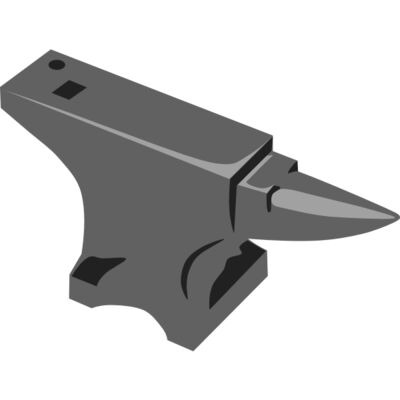Challenging Eddington
Jan 16, 2024 14:26:59 #
I am looking forward to capturing April's Solar Eclipse on "film".
Erie, PA is my current thinking to position myself in the path of totality.
The objective (I am a physicist) is to observe the deflection of star images
as the disc of the sun passes near, over, and away from their normal astronomical positions.
According to Steven Weinberg's book on General Relativity, the deflection is seconds of arc.
Are there ready solutions for this? If not, what help is available?
Erie, PA is my current thinking to position myself in the path of totality.
The objective (I am a physicist) is to observe the deflection of star images
as the disc of the sun passes near, over, and away from their normal astronomical positions.
According to Steven Weinberg's book on General Relativity, the deflection is seconds of arc.
Are there ready solutions for this? If not, what help is available?
Jan 17, 2024 07:48:29 #
Normal positions of stars? Are you referring to an occultation? What does film have to do with it?
Jan 17, 2024 08:39:09 #
This is over my head, and I suspect most people here. Are you as a physicist asking for help setting up a physics experiment? I had to Google Eddington, but I couldn't figure out how you are challenging him.
Jan 17, 2024 08:57:56 #
I also can't comprehend how you could record any star appearing close to the sun if your using a solar filter. Also the stars wouldn't appear at totality, without a filter, due to the corona being so bright. Please help us understand.
Jan 17, 2024 09:02:52 #
artificiarius wrote:
I am looking forward to capturing April's Solar Eclipse on "film".
Erie, PA is my current thinking to position myself in the path of totality.
The objective (I am a physicist) is to observe the deflection of star images
as the disc of the sun passes near, over, and away from their normal astronomical positions.
According to Steven Weinberg's book on General Relativity, the deflection is seconds of arc.
Are there ready solutions for this? If not, what help is available?
Erie, PA is my current thinking to position myself in the path of totality.
The objective (I am a physicist) is to observe the deflection of star images
as the disc of the sun passes near, over, and away from their normal astronomical positions.
According to Steven Weinberg's book on General Relativity, the deflection is seconds of arc.
Are there ready solutions for this? If not, what help is available?
"film"?
I would suggest you post in the astrophotography section since they are more familiar with stellar objects. https://www.uglyhedgehog.com/s-109-1.html
https://www.nikonians.org/reviews/fov-tables says that for 35mm, the field of view of a 200mm lens is around 10 degrees (horizontal). A second of arc would be 1/36000 of that. That is significantly less than a pixel for digital cameras. You will need a longer focal length to detect shifts on the order of a second.
It sounds like a real challenge. You have to pick a star that is bright enough to see well against the glare of the solar corona. Lots of luck.
Jan 17, 2024 09:06:55 #
alberio wrote:
I also can't comprehend how you could record any star appearing close to the sun if your using a solar filter. Also the stars wouldn't appear at totality, without a filter, due to the corona being so bright. Please help us understand.
This was an experiment that was done sometime in the early 20th century. The moon blocked out most of the sunlight and photos of the star background showed a shift due to the gravitational field of the sun, confirming some predictions of relativity.
Jan 17, 2024 09:34:34 #
DirtFarmer wrote:
This was an experiment that was done sometime in the early 20th century. The moon blocked out most of the sunlight and photos of the star background showed a shift due to the gravitational field of the sun, confirming some predictions of relativity.
I was suspecting gravitational lensing had something to do with the question, but wouldn't the background stars have to be very close to the edge of the sun to notice a shift? How could you see them through the glare of the corona? I'm still clueless.
Jan 17, 2024 09:47:19 #
alberio wrote:
I was suspecting gravitational lensing had something to do with the question, but wouldn't the background stars have to be very close to the edge of the sun to notice a shift? How could you see them through the glare of the corona? I'm still clueless.
THAT is the challenge.
Jan 17, 2024 10:41:18 #
Jan 17, 2024 13:37:06 #
Good luck
The procedure has been done by astronomers all over the world for about 100 years, so I am not sure what kind of challenge you propose?
The phenomenon of Gravitational Lensing is now used all the time on earth and by the Hubble.
It is pretty well documented that massive objects bend light.
If you are a Physicist, you know that.
This is not something you capture in a single photograph, You have to photograph the star field before the sun is in the picture, noting the 'Target star's' position, and again during a total eclipse with the sun blocking the star's actual position but showing it visible due to gravitational lensing that Einstein predicted. You do not do this with a camera lens, You need LONG focal length and a large objective as well as perfect seeing conditions (and minimal Corona.
This is from NASA: The basic idea is that you have to compare the positions of the stars before the sun arrives at its sky position at totality, and during the eclipse when the sun is present. The star images should appear to shift outwards from their normal sky position, but the amount is very slight and hard to measure. It amounts to only about an astronomical ‘second of angular arc’ or 1/3600 of a degree. The entire diameter of the sun is about 1800 arcseconds to give you a sense of scale. Also, stars twinkle and this smears out the image of a star over a scale of about an arcsecond as well.
But if you were a Physicist, you would know this (or know exactly where to find it)
Better to go enjoy yourself and take a few pictures of totality and the corona
The procedure has been done by astronomers all over the world for about 100 years, so I am not sure what kind of challenge you propose?
The phenomenon of Gravitational Lensing is now used all the time on earth and by the Hubble.
It is pretty well documented that massive objects bend light.
If you are a Physicist, you know that.
This is not something you capture in a single photograph, You have to photograph the star field before the sun is in the picture, noting the 'Target star's' position, and again during a total eclipse with the sun blocking the star's actual position but showing it visible due to gravitational lensing that Einstein predicted. You do not do this with a camera lens, You need LONG focal length and a large objective as well as perfect seeing conditions (and minimal Corona.
This is from NASA: The basic idea is that you have to compare the positions of the stars before the sun arrives at its sky position at totality, and during the eclipse when the sun is present. The star images should appear to shift outwards from their normal sky position, but the amount is very slight and hard to measure. It amounts to only about an astronomical ‘second of angular arc’ or 1/3600 of a degree. The entire diameter of the sun is about 1800 arcseconds to give you a sense of scale. Also, stars twinkle and this smears out the image of a star over a scale of about an arcsecond as well.
But if you were a Physicist, you would know this (or know exactly where to find it)
Better to go enjoy yourself and take a few pictures of totality and the corona
Jan 17, 2024 20:30:55 #
artificiarius wrote:
I am looking forward to capturing April's Solar Eclipse on "film".
Erie, PA is my current thinking to position myself in the path of totality.
The objective (I am a physicist) is to observe the deflection of star images
as the disc of the sun passes near, over, and away from their normal astronomical positions.
According to Steven Weinberg's book on General Relativity, the deflection is seconds of arc.
Are there ready solutions for this? If not, what help is available?
Erie, PA is my current thinking to position myself in the path of totality.
The objective (I am a physicist) is to observe the deflection of star images
as the disc of the sun passes near, over, and away from their normal astronomical positions.
According to Steven Weinberg's book on General Relativity, the deflection is seconds of arc.
Are there ready solutions for this? If not, what help is available?
Well, Eddington's math and understanding of Einstein's general theory of relativity are beyond my comprehension. Eddington felt that he had demonstrated the gravitational "bending" of light by gravity thus stars would out of place if their light passed close to the sun. His he claimed his crude instruments had demonstrated this bending. Later more sophisticated studies supported Eddington's find. Do you want to "challenge" his well-supported findings by doing the same experiment? I fear this would be an exercise of futility.
Jan 18, 2024 09:50:20 #
JohnSwanda wrote:
I had to Google Eddington, but I couldn't figure out how you are challenging him.
https://www.facebook.com/eddingtonmaine.gov/

Jan 18, 2024 09:52:50 #
artificiarius wrote:
The objective (I am a physicist) is to observe the deflection of star images as the disc of the sun passes near, over, and away from their normal astronomical positions.
As in gravitational lensing?
https://www.google.com/search?q=eclipse+and+deflection+of+star+images&oq=eclipse+and+deflection+of+star+images&gs_lcrp=EgZjaHJvbWUyBggAEEUYOTIKCAEQABiABBiiBDIKCAIQABiABBiiBDIKCAMQABiABBiiBNIBCDc4NjNqMGo0qAIAsAIA&sourceid=chrome&ie=UTF-8
Jan 18, 2024 15:01:52 #
That is my fall-back position. You are correct, but the effort, however expensive, is my reward.
Jan 19, 2024 10:00:26 #
If my back of the envelope calculations are correct, to get a 1 arcsecond resolution with a standard pixel size of 5.7 microns(24 mp full frame), I would need a telescope with a focal length of more than 10 meters.
If you want to reply, then register here. Registration is free and your account is created instantly, so you can post right away.




